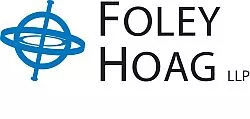- within Media, Telecoms, IT and Entertainment topic(s)
Summary
On February 13, 2025, Patent Trial and Appeal Board (PTAB) at the U.S. Patent and Trademark Office (USPTO) overturned a patent eligibility rejection of claims directed to a method of performing a computation using a quantum computer (Ex parte YUDONG CAO, Appeal 2024-002159, Application 16/591,239). Whether claims of this type would pass the patent eligibility muster, so-called Mayo/Alice test, has for some time been a matter of debate. In the absence of substantial precedential guidance by PTAB or Federal Circuit in the area of quantum computers, this PTAB decision provides an important positive data point.
The Decision
The rejected claims were directed to a method for solving a linear systems of equations using a hybrid computer system that includes both a classical computer and a quantum computer (HQC). The preamble of Claim 1 reads:
A method for preparing a quantum state that approximates a
solution x to a linear system of equations
A𝑥⃗= ![]() for a matrix A and a vector
for a matrix A and a vector ![]() ... 1
... 1
The method arrives at an approximate solution by iteratively
optimizing a set of parameters ![]() . Each iteration requires a step of
. Each iteration requires a step of
... on a quantum computer, controlling a plurality of qubits,
according to the set of circuit parameters ![]() , to prepare a quantum state ψ(
, to prepare a quantum state ψ( ![]() )⟩...
)⟩...
The Examiner formulated his rationale for rejecting Claim 1 as not being patent-eligible as follows:
The preparation and measurement of the quantum state on the quantum computer is a recitation of gathering data [...] to be used in performing the abstract idea. [The method defined by Claim 1] does not integrate the abstract idea into a practical application or amount to significantly more than the abstract idea.2
The PTAB's decision to overturn the rejection was based on
its interpretation of the step "on a quantum computer,
controlling a plurality of qubits, according to the set of circuit
parameters ![]() ." The Board found
that this very step is the "focus of the invention" and
"integrates the recited abstract idea into a practical
application."3 The Board looked at the application
and found a well-formulated problem that the claimed invention
addressed.
." The Board found
that this very step is the "focus of the invention" and
"integrates the recited abstract idea into a practical
application."3 The Board looked at the application
and found a well-formulated problem that the claimed invention
addressed.
Namely, Applicant stated that existing quantum computers cannot solve linear systems (because the existing quantum computers "are noisy and have low circuit depths"). However, solving linear systems of equations is a problem of broad application in science and engineering4. Applicant's use of a hybrid quantum-classical computer system permits obtaining the requisite solutions, and is, therefore, an improvement of the existing quantum computer technology.
Quoting from the Appellant's brief, the PTAB concluded that
the step "on a quantum computer, controlling a plurality of
qubits, according to the set of circuit parameters ![]() " is
" is
the additional element [that] integrates the abstract idea of mathematical relationships into a practical application of enabling noisy quantum computers, which have limited circuit depth, to practically solve linear systems—a technology improvement.5
Key Takeaways
- Applicant should clearly articulate the problem being solved by the claimed invention.
- Applicant should clearly formulate the technical improvement offered by the claimed invention.
- If possible, claims should refer to physical elements of a device and concrete actions performed by or on a device.
- Realizing a known method on a quantum computer can in and of itself be an improvement of technology.
- A use of HQC computer systems can be an improvement of technology if it addresses a previously unresolved problem.
Footnotes
1 PTAB Opinion, p. 2.
2 Op., at p. 12.
3 Id.
4 Op., at p. 13.
5 Op., at p. 12.
The content of this article is intended to provide a general guide to the subject matter. Specialist advice should be sought about your specific circumstances.



